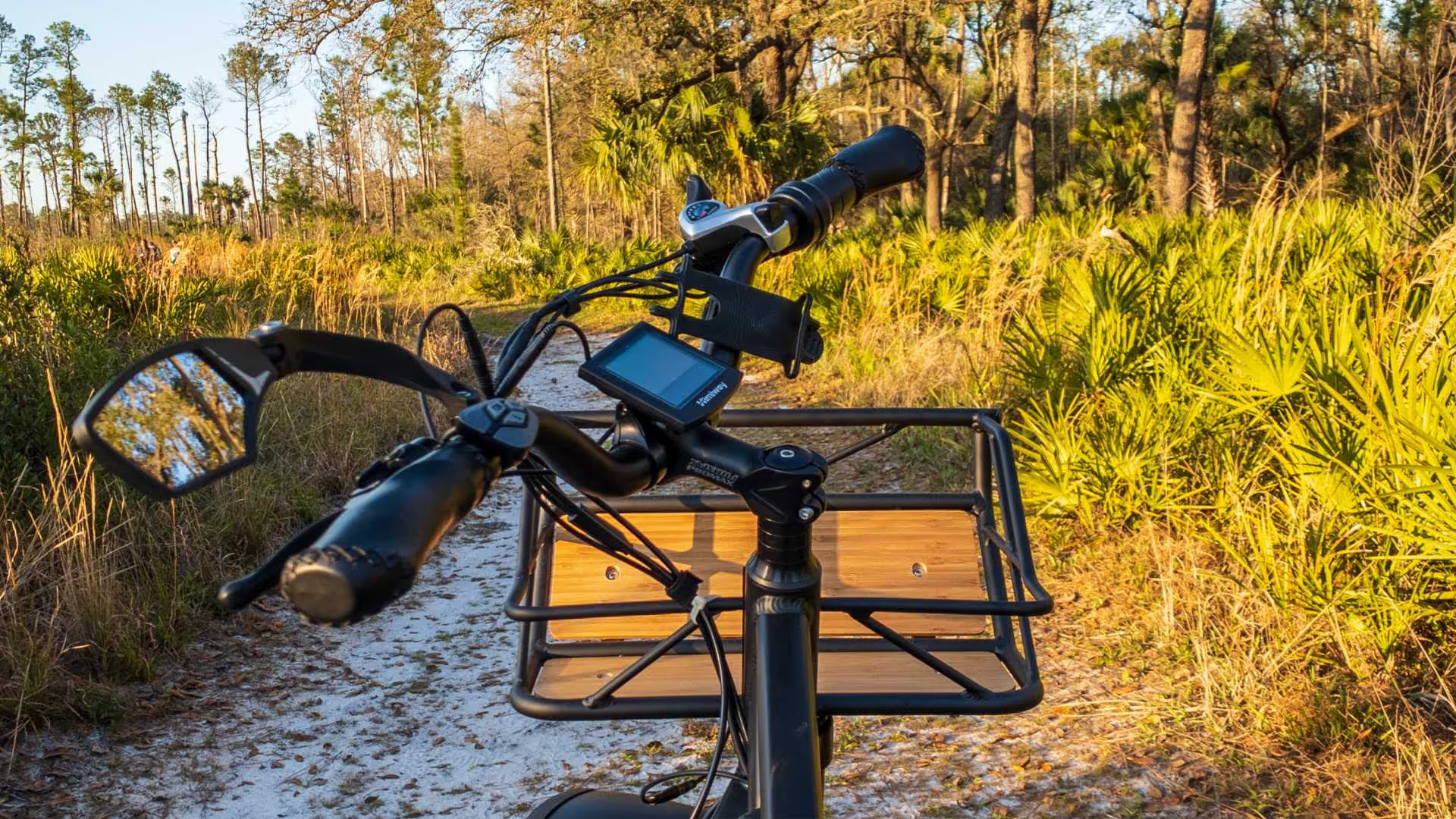
The future of sustainable living and eco-friendly transportation, e-bikes are taking the country by storm. With so many options on the market, choosing your first e-bike can be daunting. We’ve highlighted several key factors to consider when selecting your e-bike to ensure you get the perfect bike.
There’s nothing worse than having your bike run out of battery halfway to work or at the bottom of the last climb on the ride, and you’re left lugging a heavy bike home. The terrain here varies greatly, so consider the range you’ll typically ride and choose a battery accordingly. The range of the average e-bike battery is roughly 1 mile per 20-watt-hour. A hilly route like most of New Zealand will sap your battery faster than the equivalent flat route.
Like cars where you get front and rear-wheel drive, a similar concept applies to electric bicycles. A mid-drive motor sits in the crank and typically offers the best balance and efficiency for riding. This centres the bike’s weight, making it more stable, whereas a bike with a rear wheel motor can be back heavy and not offer as good handling.
There are strict regulations regarding e-bikes, and ensuring you’re familiar with them before purchasing your e-bike will be helpful. In New Zealand, an electric bicycle can’t exceed 300 watts. E-bikes that exceed 300 watts are legally classified as LA mopeds. This doesn’t mean that if you only ride off-road, the regulations don’t apply to you. Putting an 800w motor on your fatbike and hooning along the beach is still illegal. Familiarise yourself with New Zealand's e-bike regulations, including speed limits, helmet requirements, and where to ride your e-bike.
There are many bike options when it comes to the design and functionality of e-bikes. Select a bike style that aligns with your riding preferences and needs. Whether it's a commuter, a cruiser, a cargo bike or a mountain bike, each has unique features.
Cargo bikes are ideal for transporting cargo. If you’re tired of sitting in the Sydney morning traffic just to get the kids to school down the road, explore a family-friendly cargo e-bike. These have seats for all and space for bags, too. They are perfect for doing groceries after the school drop-off run.
Hybrid e-bikes are the perfect quick commuter bikes. They’re a cross between a road and mountain bike featuring wider smooth tyres and a straight handlebar. They’re nippy and great for zipping around Christchurch’s rapidly expanding network of cycleways.
Traditional mountain and road bikes are also available in e-bike versions. These are great for allowing riders to keep up with a group faster than them or to expand their range, enabling further distances to be covered and new roads to be explored.
Investing in quality means you’re less likely to spend more money on the bike later. Buying an e-bike with components from reputable brands in the cycling industry will improve your e-bike’s performance, longevity and reliability. Two important features to look at are brakes and gears. A quality drivetrain (gears) makes your ride significantly smoother, whilst good brakes prevent you from eating the dirt or tar.
Consider comfort when buying your e-bike. Your bike should be a pleasure to ride, and the last thing you want is for it to be uncomfortable.
If you’re buying it to hit the trails, consider a soft-tail bike, making the ride over rough, rocky terrain smoother and more enjoyable. A hardtail is ideal if you’re joining a gravel group but not quite fast enough to keep up with everyone yet. E-mountain bikes are also great for spouses who aren’t as fit but still want to participate or for parents towing kids in a bike trailer.
A similar concept applies to electric road bicycles; they’re fantastic for older riders who want to keep up with the older generation, people using them as training aids, casual riders or those wishing to explore further from home.
If your primary use for your e-bike is commuting, explore a hybrid or cargo bike option. You get step-through versions of these bikes, making commuting easier in business attire. They will also typically have a place for a basket or carrier, making it easy to transport the basics like a laptop or approved bicycle lock you’ll need in the office.
E-bikes can be hefty and weigh a ton, which makes them difficult to pick up or store. Make sure you’ve taken this into consideration before purchasing your e-bike. Do you live in an apartment on the 6th floor in the CBD? Or do you have a house out near Aldinga Beach? This will help you decide on a manageable weight for your e-bike. Heavier bikes offer more stability but are less portable. Meanwhile, lighter e-bikes are easier to handle and transport.
Set a realistic budget based on your needs and desired features. Consider the long-term value an e-bike offers—investing a bit more initially might save you from frequent repairs or upgrades in the future. Also, explore financing options provided by your local bike shop or a bike-to-work scheme like WorkRide that are available to purchase your bike to make it more affordable. You can also explore second-hand options from Marketplace or your local bike store.
Buying a bike is an investment; it requires research and careful consideration before purchasing to ensure that you end up with the correct bike for you. By analysing your needs, preferences, budget and bicycle selling points, you’ll have an e-bike that you’ll happily ride for years.
Make sure that you don’t skimp on insurance when you purchase your e-bike. Sundays offers affordable e-bike insurance that covers theft, travel and more. Take out an easy, obligation-free electric bicycle insurance quote here.